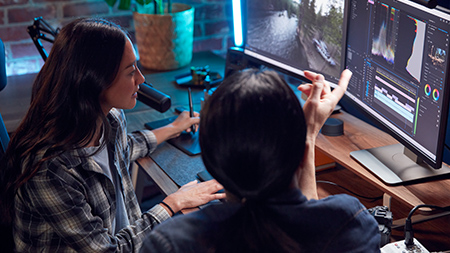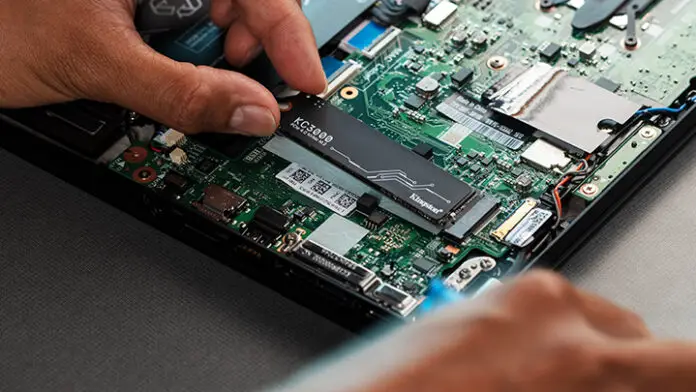At Kingston, we’re always thinking about how to improve computer performance. For some people, it’s not always clear whether their computer’s problems can be fixed or alleviated with a RAM or SSD upgrade. Even when you notice and correctly identify a problem, it can seem difficult to resolve. That’s why we wrote this article: to explain step by step how an average user can discover and fix a memory or storage problem on their machine. We hope that by the end, you will be confident in knowing when and how to upgrade your computer.
Step 1: Discover a problem with your Dell
Computer performance problems are usually noticed when you overload the physical capacity of your computer’s memory or when you use hard drives that spin slowly. For example, when playing latest generation games or when using Photoshop . The slowdown can have several causes, which are discussed in the following steps.
Step 2: Consider a Memory Upgrade Solution
If all other common remedies to resolve your system’s slow (or malfunctioning) problem have failed, a memory upgrade is the most likely solution to your problem. Finding the right memory for your computer and installing it is a series of small tasks that can be easily accomplished.
Step 3: Determine your memory needs
Once you have determined that you need more memory for your Dell computer, the next task is to find out how much memory will solve the problem. Fortunately, Kingston offers a chart to help Dell owners evaluate how much memory they have and how much they need .
Step 4: Determining your model number

To find the RAM compatible with your system, you need to know the model number. Dell has several ways of naming and numbering its systems. If you or your system administrator don’t know it, we offer several ways to find out.
- Dell models have names like Inspiron, Latitude, Precision, Optiplex, and XPS. These names cover dozens of variations, with different screen sizes, processors, or simply launch years. The name plus a few numbers and/or letters will correspond to the name and model number of your PC. For example ::
- Dell Inspiron 15 3567
- Dell Latitude 5440
- Dell Optiplex 7010
- Dell XPS 15 9530
- Many Dell computers have stickers or labels indicating the model name or number. For laptops, you should look at the bottom cover, base, battery compartment, screen, keyboard cover or wrist rest. For Dell desktops, look on the top panel, back panel, or side panel of the tower case. For all-in-one computers, it’s on the lower back or on the stand. Dell tablet labels are either on the screen or on the back panel. This number should not be confused with the serial number or service tag number, which will be an alphanumeric string of 7 or more digits.
- Microsoft Windows has the Dell SupportAssist application , which can be downloaded if it is not already installed on your computer. The product model of the system you are using is displayed when you open it.
- If you were unable to identify your model using the steps above, you will need to access the system information. For Windows, press Windows + R keys to open the Run dialog box. Enter msinfo32 . A System Information window appears, and the System SKU line displays your computer’s model name and number. Use this name and/or number for your search in step 5 below.
- Are you still having trouble finding it? The easiest way to find your Dell model number is to use the Dell Service Tag Lookup. Each Dell computer has a unique Service Tag number . You can enter it here to check the exact model number of your Dell system: https://www.dell.com/support/home/fr-fr
Step 5: Enter the model number in the Configurator
Once you know your model name and/or number, go to the Kingston Configurator and enter it in the Search by system/device field. You should get a list of variants, or the single model with the brand name.
Click on the corresponding link to view information that will help you know how much RAM your Dell computer can hold. You’ll also find lists of Kingston part numbers, as well as links to one of our online sales partners.
Step 6: Read the System Results Page
When you view your search results in the Configurator, you may not understand everything on this page. Technical information doesn’t have to be confusing.
The memory section shows the standard amount of memory your model has and whether it can be upgraded or expanded. It will also indicate whether (as with some laptops) the model’s factory-configured memory cannot be removed. You will see the memory bank diagram, which shows the configuration of your computer’s memory slots.
Step 7: Select the memory of your choice

Searching the Configurator will also recommend memory compatible with your system. Click the “Compatible Memory Upgrades” link, or simply scroll down to find a list of guaranteed compatible memory options with purchase links. You can purchase the recommended memory from one of Kingston’s authorized resellers or, in some countries, directly from the Kingston website.
Step 8: Consider an SSD Upgrade
The Configurator is a powerful tool. It not only finds memory options compatible with any system, but it can do the same for storage. A new SSD can be a great complement to a memory upgrade, so you can really get the most out of your system. SSDs also offer a noticeable speed improvement over the spinning hard drives you might use. Just click the “Supported Storage Upgrades” link to see a list of SSDs your computer could put to good use. You might be surprised how inexpensive a significant upgrade can be.
Step 9: Install your memory in your system
Installing memory can be the most intimidating step, especially if you’ve never done it before. That’s why Kingston has put together a guide for installing memory in desktops and laptops. We also have video guides for both, to make it easier for you.
- Install memory in a desktop PC
- Installing memory in a laptop
Step 10: Restart the computer to make sure the new memory works.
It may take longer than usual for the computer to start up to identify new memory, and you may receive a message indicating that the amount of memory has changed.
Better hardware, better performance
Now you can enjoy the benefits of better memory and storage: faster performance in games and apps, the ability to run apps and games that require more memory, and the ability to run more games. applications simultaneously on your Dell system. When you see the difference these simple upgrades can make in a computer’s performance, you may want to upgrade the memory and storage of all the systems your family own



